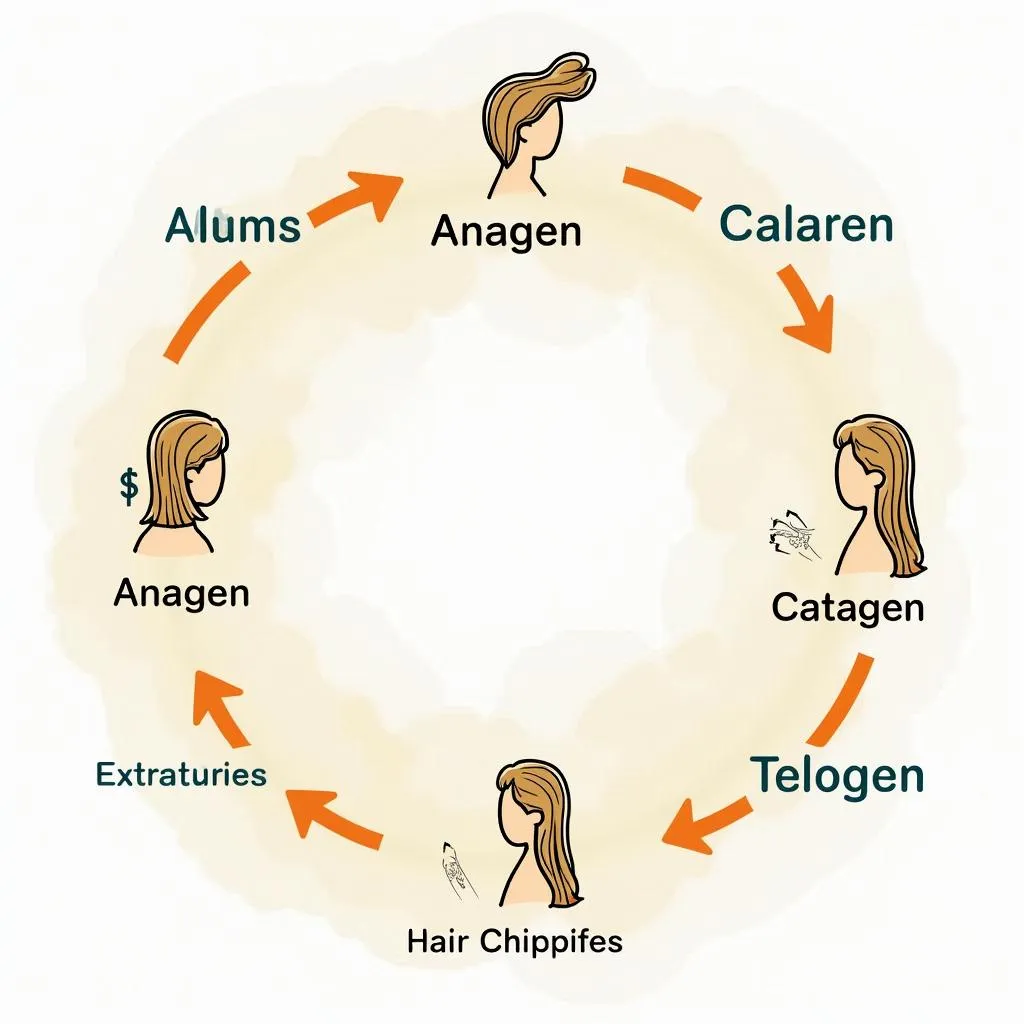After completing chemotherapy, many people look forward to regaining a sense of normalcy, and that often includes coloring their hair. However, it’s essential to approach hair coloring after chemo with caution to ensure the health of your new hair and scalp.
So, how soon can you color your hair after chemo? The general recommendation is to wait at least six months after your last chemotherapy treatment. This period allows your hair follicles ample time to recover and for your new hair to grow in strong and healthy.
Understanding the Impact of Chemotherapy on Hair
Chemotherapy drugs are powerful medications that target rapidly dividing cells in the body, including cancer cells. Unfortunately, these drugs can also affect other fast-growing cells, such as those in your hair follicles. This interference disrupts the normal hair growth cycle, leading to hair loss, often referred to as chemo-induced alopecia.
Chemotherapy’s impact on hair varies from person to person. Some individuals experience complete hair loss, while others notice thinning or changes in hair texture. The type of chemotherapy drugs, dosage, and individual factors all play a role in how your hair is affected.
 Chemotherapy hair loss illustration
Chemotherapy hair loss illustration
Why Waiting is Crucial
Waiting to color your hair after chemo is crucial for several reasons:
- Scalp Sensitivity: Chemotherapy can make your scalp incredibly sensitive and prone to irritation. Applying harsh chemicals found in hair dyes too soon can lead to discomfort, dryness, itching, or even burns.
- Hair Fragility: New hair growth after chemo is often delicate and fragile. Coloring it prematurely can cause further damage, breakage, and dryness.
- Unpredictable Color Results: The texture and porosity of your new hair might differ from your pre-chemo hair. Coloring too soon may result in uneven color absorption and unexpected outcomes.
Factors Influencing Coloring Timeframe
While the six-month guideline is a good starting point, several individual factors can influence the optimal time to color your hair after chemo:
- Chemotherapy Regimen: The specific chemotherapy drugs and treatment duration can affect hair follicle recovery time.
- Hair Growth Rate: Everyone’s hair grows at a different rate. Some individuals may find their hair growing back quickly, while others may experience a slower regrowth process.
- Scalp and Hair Health: If you experience lingering scalp sensitivity, dryness, or other issues, it’s essential to address these concerns before coloring your hair.
- Advice from Your Oncologist and Hairdresser: Consulting with your oncologist and a trusted hairdresser experienced in working with chemo patients is crucial. They can provide personalized recommendations based on your individual circumstances.
 Hair growth cycle after chemotherapy
Hair growth cycle after chemotherapy
Tips for Coloring Your Hair After Chemo
When you’re ready to color your hair after chemo, consider these essential tips:
- Consult Professionals: Schedule consultations with both your oncologist and a reputable hairdresser to get their expert advice and personalized recommendations.
- Opt for Gentle Options: Choose ammonia-free hair dyes, semi-permanent colors, or natural alternatives like henna, which are less damaging to fragile hair.
- Perform a Patch Test: Always conduct a patch test 48 hours before coloring your entire head to check for any adverse reactions or sensitivities.
- Start Gradually: Consider starting with highlights or lowlights instead of a full-color application to minimize chemical exposure.
- Deep Condition Regularly: Keep your hair and scalp well-moisturized with deep conditioning treatments to combat dryness and promote healthy hair growth.
- Be Patient: It’s crucial to be patient with your hair’s recovery process. Avoid frequent coloring and heat styling, allowing your hair ample time to regain its strength and resilience.
When to Consult a Doctor
If you experience any unusual scalp irritation, burning, redness, or other concerning symptoms after coloring your hair, consult a doctor or dermatologist immediately.
Remember, prioritizing the health of your hair and scalp is paramount. By waiting for your hair to fully recover from chemotherapy and following these guidelines, you can safely and confidently enjoy the transformative power of color once again.

